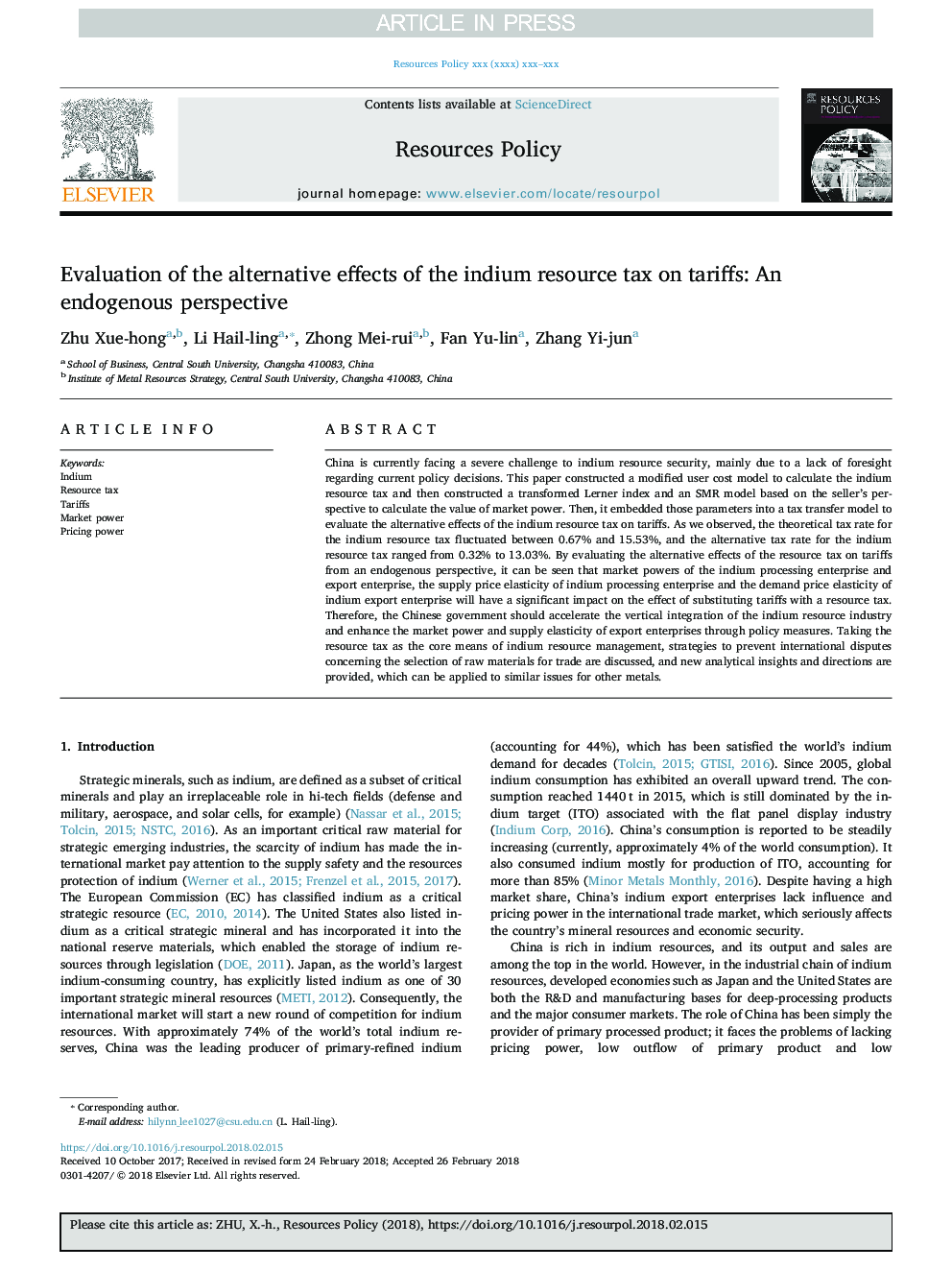| Article ID | Journal | Published Year | Pages | File Type |
|---|---|---|---|---|
| 7387535 | Resources Policy | 2018 | 11 Pages |
Abstract
China is currently facing a severe challenge to indium resource security, mainly due to a lack of foresight regarding current policy decisions. This paper constructed a modified user cost model to calculate the indium resource tax and then constructed a transformed Lerner index and an SMR model based on the seller's perspective to calculate the value of market power. Then, it embedded those parameters into a tax transfer model to evaluate the alternative effects of the indium resource tax on tariffs. As we observed, the theoretical tax rate for the indium resource tax fluctuated between 0.67% and 15.53%, and the alternative tax rate for the indium resource tax ranged from 0.32% to 13.03%. By evaluating the alternative effects of the resource tax on tariffs from an endogenous perspective, it can be seen that market powers of the indium processing enterprise and export enterprise, the supply price elasticity of indium processing enterprise and the demand price elasticity of indium export enterprise will have a significant impact on the effect of substituting tariffs with a resource tax. Therefore, the Chinese government should accelerate the vertical integration of the indium resource industry and enhance the market power and supply elasticity of export enterprises through policy measures. Taking the resource tax as the core means of indium resource management, strategies to prevent international disputes concerning the selection of raw materials for trade are discussed, and new analytical insights and directions are provided, which can be applied to similar issues for other metals.
Related Topics
Physical Sciences and Engineering
Earth and Planetary Sciences
Economic Geology
Authors
Zhu Xue-hong, Li Hai-ling, Zhong Mei-rui, Fan Yu-lin, Zhang Yi-jun,
